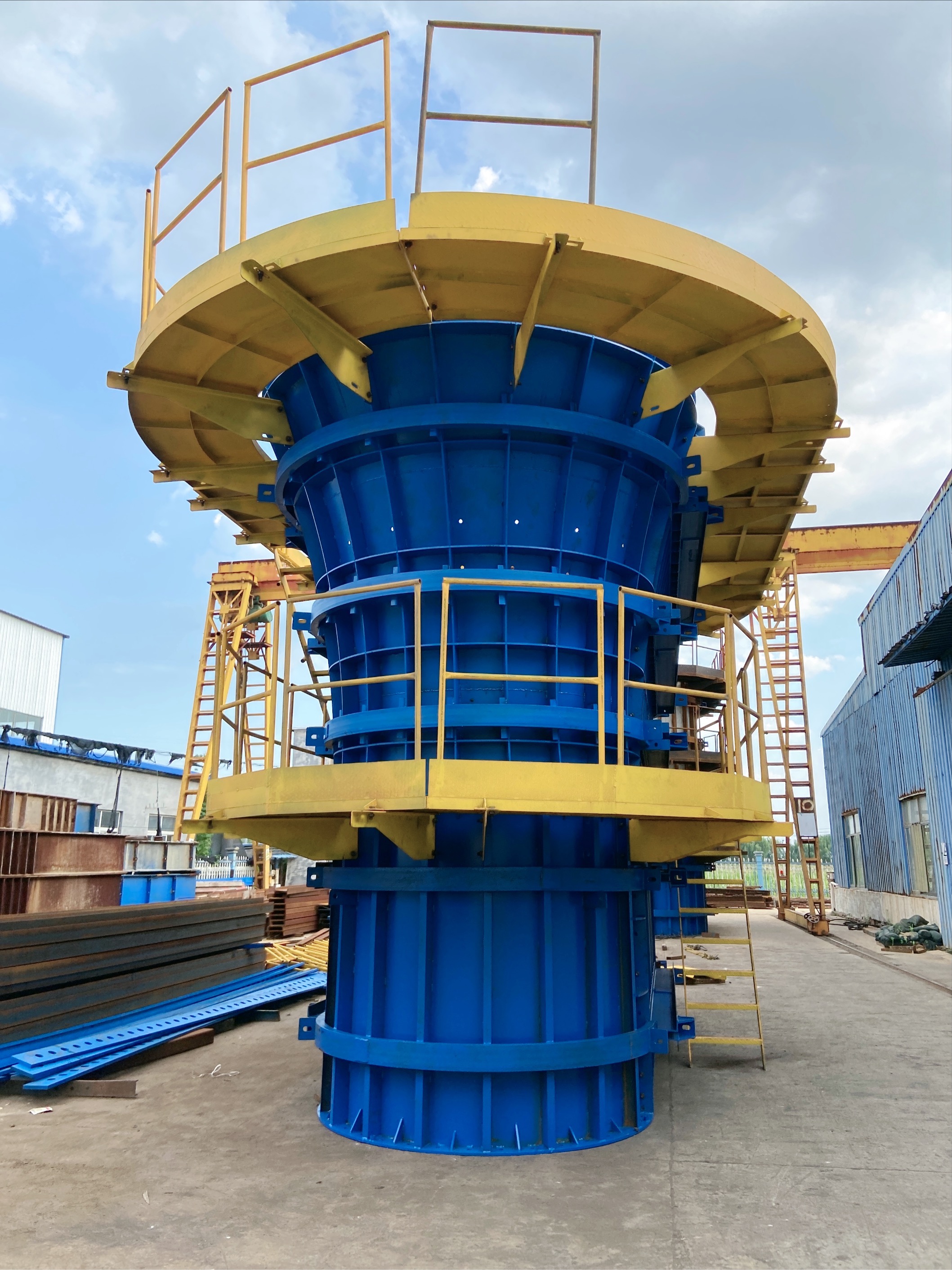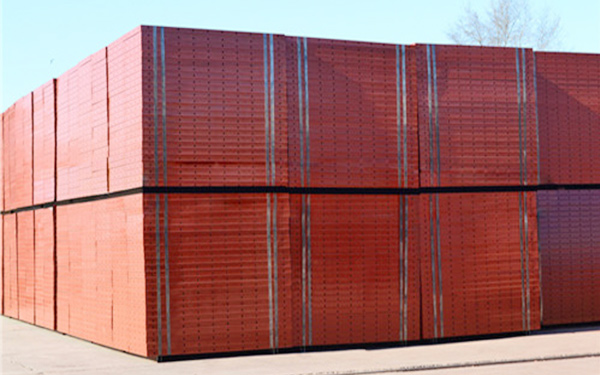Current position:
Home
News home
Industry News
Processing custom steel formwork factory: About rust prevention treatment methods and precautions for steel formwork
Processing custom steel formwork factory: About rust prevention treatment methods and precautions for steel formwork
source:Shandong Tianhong Heavy Industry Co., Ltd
Abstract:
After rust prevention treatment, the steel formwork should also be regularly inspected and maintained. Long term idle steel formwork should be regularly inspected, and any signs of rust should be promptly addressed; Clean the surface promptly after use
The rust prevention treatment of steel formwork is divided into two steps: rust removal and rust prevention. The specific methods are as follows:
Rust removal method
Mechanical cleaning: Use tools such as wire brushes, grinding machines, sandblasting machines, etc. to polish the surface of steel templates to remove rust and oxide layers. Sandblasting treatment has a good effect, which can make the surface rougher and increase coating adhesion.
Chemical cleaning: using acid or alkali washing methods to remove surface rust and oil stains through chemical reactions. After pickling, it is necessary to rinse thoroughly with clean water and immediately carry out rust prevention treatment to prevent secondary rusting.
Rust prevention methods
Brushing anti rust paint: This is one of the main anti rust measures. The primer can be selected as epoxy zinc rich primer or red lead anti rust paint, which can effectively prevent corrosion; The topcoat is made of polyurethane paint or acrylic paint, which has good weather resistance and wear resistance, can protect the primer and prolong the anti rust effect. When painting, it should be evenly applied to ensure coverage of all surfaces, especially corners and welds.
Galvanizing treatment: Immerse the steel template in molten zinc solution to form a zinc iron alloy layer on its surface, which can protect the steel template for a long time. Hot dip galvanizing has good anti rust effect but high cost, while electroplating galvanizing has low cost but relatively weak anti rust effect, suitable for steel formwork in short-term use or low corrosion environments.
Use anti rust oil: When the steel formwork is not used or stored for a long time, apply anti rust oil to form an oil film, isolating air and moisture. Common anti rust oils include mineral oil, synthetic oil, and anti rust grease. When painting, all parts should be evenly covered, and regular inspections and necessary touch ups should be carried out.
Use rust proof paper or rust proof film: For steel templates stored for a long time, package them with rust proof paper or rust proof film. They contain volatile rust inhibitors that can release rust preventing gases to form a protective layer. When packaging, it should be well sealed to prevent air and moisture from entering.
Electrochemical protection: This is a more advanced rust prevention technology. Sacrificial anode protection is the installation of active metals such as zinc and magnesium as anodes on steel templates to protect them through corrosion, suitable for long-term use or highly corrosive environments; External current protection is achieved by using an external power source to turn the steel template into a cathode to prevent corrosion. It has a high cost but significant effect and is suitable for large-scale engineering or important structures.
precautions
Construction environment: Whether applying anti rust paint or using anti rust agents, the temperature of the construction environment should be between 5 ℃ and 35 ℃, and the relative humidity should not exceed 85%. Avoid rust prevention treatment in rainy or windy weather.
Coating quality inspection: After applying anti rust paint or using anti rust agents, it is necessary to promptly check whether the coating is uniform, whether there are defects such as missed coating, sagging, bubbles, etc. Any problems found should be repaired in a timely manner.
Storage and handling: Steel formwork should be stored in a dry, well ventilated place that avoids contact with corrosive substances such as acids, alkalis, and salts. When stacking, it should be placed under sleepers and lifted off the ground. Handle with care during transportation to avoid collisions, scratches, and damage to the anti rust coating.
Regular maintenance: Even after rust prevention treatment, the steel formwork should be regularly inspected and maintained. Long term idle steel formwork should be regularly inspected, and any signs of rust should be promptly addressed; Clean up surface debris in a timely manner after use, and replenish rust proof paint or rust inhibitor according to the situation.
Rust removal method
Mechanical cleaning: Use tools such as wire brushes, grinding machines, sandblasting machines, etc. to polish the surface of steel templates to remove rust and oxide layers. Sandblasting treatment has a good effect, which can make the surface rougher and increase coating adhesion.
Chemical cleaning: using acid or alkali washing methods to remove surface rust and oil stains through chemical reactions. After pickling, it is necessary to rinse thoroughly with clean water and immediately carry out rust prevention treatment to prevent secondary rusting.
Rust prevention methods
Brushing anti rust paint: This is one of the main anti rust measures. The primer can be selected as epoxy zinc rich primer or red lead anti rust paint, which can effectively prevent corrosion; The topcoat is made of polyurethane paint or acrylic paint, which has good weather resistance and wear resistance, can protect the primer and prolong the anti rust effect. When painting, it should be evenly applied to ensure coverage of all surfaces, especially corners and welds.
Galvanizing treatment: Immerse the steel template in molten zinc solution to form a zinc iron alloy layer on its surface, which can protect the steel template for a long time. Hot dip galvanizing has good anti rust effect but high cost, while electroplating galvanizing has low cost but relatively weak anti rust effect, suitable for steel formwork in short-term use or low corrosion environments.
Use anti rust oil: When the steel formwork is not used or stored for a long time, apply anti rust oil to form an oil film, isolating air and moisture. Common anti rust oils include mineral oil, synthetic oil, and anti rust grease. When painting, all parts should be evenly covered, and regular inspections and necessary touch ups should be carried out.
Use rust proof paper or rust proof film: For steel templates stored for a long time, package them with rust proof paper or rust proof film. They contain volatile rust inhibitors that can release rust preventing gases to form a protective layer. When packaging, it should be well sealed to prevent air and moisture from entering.
Electrochemical protection: This is a more advanced rust prevention technology. Sacrificial anode protection is the installation of active metals such as zinc and magnesium as anodes on steel templates to protect them through corrosion, suitable for long-term use or highly corrosive environments; External current protection is achieved by using an external power source to turn the steel template into a cathode to prevent corrosion. It has a high cost but significant effect and is suitable for large-scale engineering or important structures.
precautions
Construction environment: Whether applying anti rust paint or using anti rust agents, the temperature of the construction environment should be between 5 ℃ and 35 ℃, and the relative humidity should not exceed 85%. Avoid rust prevention treatment in rainy or windy weather.
Coating quality inspection: After applying anti rust paint or using anti rust agents, it is necessary to promptly check whether the coating is uniform, whether there are defects such as missed coating, sagging, bubbles, etc. Any problems found should be repaired in a timely manner.
Storage and handling: Steel formwork should be stored in a dry, well ventilated place that avoids contact with corrosive substances such as acids, alkalis, and salts. When stacking, it should be placed under sleepers and lifted off the ground. Handle with care during transportation to avoid collisions, scratches, and damage to the anti rust coating.
Regular maintenance: Even after rust prevention treatment, the steel formwork should be regularly inspected and maintained. Long term idle steel formwork should be regularly inspected, and any signs of rust should be promptly addressed; Clean up surface debris in a timely manner after use, and replenish rust proof paint or rust inhibitor according to the situation.
Disclaimer: The content provided on this website is for reference only (some information is sourced from the internet). The publication of content information is for the purpose of transmission and does not represent the views of this website. If the content involves copyright issues, please contact the website editor in a timely manner, and we will take appropriate measures to avoid unnecessary losses for both parties.
Related article
- How to calculate the bearing capacity of steel formwork for rental manufacturers of construction steel formwork?
- Large scale steel formwork manufacturers: What are the advantages and disadvantages of galvanizing treatment for steel formwork?
- Steel template manufacturers supply for rent: How to deal with steel template size accuracy that is not up to standard? 双语对照 笔记
- Renting steel formwork: What is the price of steel formwork?
- Template manufacturer: What are the specific risks of grout leakage to construction safety?
- Supplier of steel formwork rental station: How to deal with and prevent leakage of slurry in steel formwork?
- Customized rental of construction steel formwork: How to ensure the installation accuracy of steel formwork?
- Customized processing of bridge steel formwork: how to prevent and deal with unstable formwork support?
- Nearby steel formwork manufacturers: What is the maintenance cycle for stainless steel formwork?
- Customized rental of steel formwork: What are the dimensions, specifications, and models of steel formwork?
- Pulling out Mountains and Rivers for Win Win - Jining Tianli Employees Celebrate National Day Holiday with Tug of War Competition
- Bridge anti-collision guardrail steel formwork: What are the common methods for correcting steel formwork?
Hot article

- T梁模版
- Pulling out Mountains and Rivers for Win Win - Jining Tianli Employees Celebrate National Day Holiday with Tug of War Competition
- 力“拔”山兮,“河”作共赢——济宁天力员工欢度国庆假期之拔河比赛
- Pulling out Mountains and Rivers for Win Win - Jining Tianli Employees Celebrate National Day Holiday with Tug of War Competition
- Pulling out Mountains and Rivers for Win Win - Jining Tianli Employees Celebrate National Day Holiday with Tug of War Competition
- Pulling out Mountains and Rivers for Win Win - Jining Tianli Employees Celebrate National Day Holiday with Tug of War Competition
- Pulling out Mountains and Rivers for Win Win - Jining Tianli Employees Celebrate National Day Holiday with Tug of War Competition
Recommended article

Customized rental of construction steel formwork: How to prevent and deal with loose joints in steel formwork?

Customized rental of steel formwork: What are the dimensions, specifications, and models of steel formwork?
- Customized rental of construction steel formwork: How to prevent and deal with loose joints in steel formwork?
- Customized rental of steel formwork: What are the dimensions, specifications, and models of steel formwork?
- Steel formwork manufacturer supply specifications: What are the applicable fields for steel formwork
- 力“拔”山兮,“河”作共赢——济宁天力员工欢度国庆假期之拔河比赛
- Pulling out Mountains and Rivers for Win Win - Jining Tianli Employees Celebrate National Day Holiday with Tug of War Competition
- Pulling out Mountains and Rivers for Win Win - Jining Tianli Employees Celebrate National Day Holiday with Tug of War Competition
- Pulling out Mountains and Rivers for Win Win - Jining Tianli Employees Celebrate National Day Holiday with Tug of War Competition
- Pulling out Mountains and Rivers for Win Win - Jining Tianli Employees Celebrate National Day Holiday with Tug of War Competition



